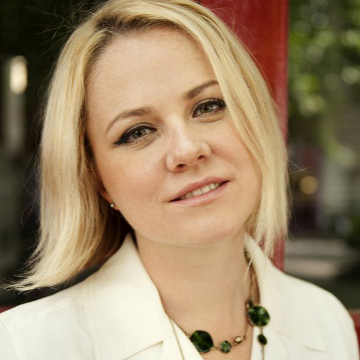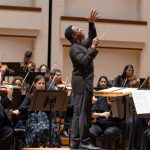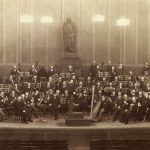October 9 & 10, 2025
Meyerson Symphony Center
Dallas, TX – USA
Dallas Symphony Orchestra, Fabio Luisi, conductor; Sofia Fomina, soprano.
Fran Joseph HAYDN: Symphony No. 92 , “Oxford”
Gustav MAHLER: Symphony No. 4
Gregory Sullivan Isaacs | 6 OCT 2025
Here is a conductor’s quandary: when the after-intermission work on a program is on the scale of Mahler’s Fourth Symphony, choosing something for the preliminary part can be precarious. In this concert by the Dallas Symphony Orchestra this past Thursday, music director Fabio Luisi’s selection of a symphony by Haydn, his Oxford Symphony (No. 92), was as good a choice as any.
When Oxford University conferred a doctorate on the world-famous composer, Haydn performed this work at the dedicatory concert honoring the occasion. Many consider Haydn’s work to be the apex of the classical era symphony, and Luisi gave it an excellently balanced reading.
Luisi also brought out Haydn’s charm and love of surprise, such as unexpected pauses and dynamic contrasts. That was also evident in the way he accented Haydn’s rhythmic displacements (something other composers wouldn’t use for decades), carefully building up Haydn’s inlaid tensions to yield their intended satisfying releases.
Haydn’s symphonic masterpiece could never be considered a musical amuse-bouche. But if Luisi had reduced the string section much more than he did on Thursday, it would have better balanced the small complement of paired winds and horns the score calls for.
When thinking about Mahler’s Symphony No. 4 and its modern-day popularity, it is perplexing to think about the negative reaction it received at its premiere. Of course, even at that early stage in his career, Mahler had a reputation for writing massive, molto serioso symphonic tomes for large orchestral forces, designed to be pondered as much as heard. So, much to almost everyone’s surprise, here comes this anomaly.
— What! Only four horns? No trombones? No tuba? —

Soprano Sofia Fomina. (sofiafomina.com)
Instead, we get sleigh bells, and a limpid-voiced soprano, Sofia Fomina, quietly singing ‘Das himmlische Leben’ in the finale. The lyrics are from a folk poem, viewing Heaven through the innocent eyes of a child. Mahler even writes in the score that she must sing with “childlike and cheerful expression, absolutely without parody…”
— And no gigantic, super-loud, goose-bumpy, pipe organ–enhanced, cymbal and brass-driven ending? —
Nope.
Instead, the symphony ends with barely a whisper. It takes its modest leave unobtrusively, with only an almost inaudible triple-pianissimo open-string e in the string bass section. It is easy to see why the first audiences were befuddled. After the heroic conclusions of his first two symphonic works, this was not what they expected from a Mahler symphony.
But the audience in the Meyerson this weekend didn’t arrive with such grandiose expectations. Some may have encountered Mahler’s symphony for the first time, without historical context, as was demonstrated by a quickly truncated attempt at applause after the first movement — something that was common and even expected before the mid-19th century, when audience manners were more spontaneous and favorite sections were often encored.
In the Scherzo, Luisi created the spirit of dancing country folks, and his phrasing added an innocent sense of humor to the proceedings. Even the unsettling and bizarre appearance of “Freund Hein” (German slang for the Grim Reaper — really, concertmaster Alexander Kerr, who plays an angular solo on a screechy and spectrally tuned violin) couldn’t detract from the festivities.
Some could quibble about Luisi’s choices if tempi, the balance between the sections of the orchestra, and other interpretive gestures. But none of his musical decisions detracted from the comprehensive concept he conveyed. Besides, some balance issues are endemic, such as writing portions of the soprano’s music in the low to middle of her vocal range.
Luisi specializes in these monumental late-Romantic-era symphonic works, and his lifetime of study and reflection on every detail of the score is apparent. On Thursday evening, he had the audience right with him, from the quizzical initial appearance of sleigh bells to the evaporative ending. Overall, the listeners appeared to love every minute of Luisi’s remarkable reading: full of blue skies and a few phantasmagorical and eerie distortions, but with an overall sense of peace.
The “forte-fortissimo Mahler-esque” ending you might have missed was finally delivered by the ovation from the audience when it was all over. ■
EXTERNAL LINKS:
- Dallas Symphony Orchestra: dallassymphony.org
- Fabio Luisi: fabioluisi.com
- Sofia Fomina: sofiafomina.com

Read more by Gregory Sullivan Isaacs.
RECENT POSTS
 Kwamé Ryan and the Charlotte Symphony, with violinist Gil Shaham, deliver a rapturous all-Tchaikovsky evening • 11 Oct 2025
Kwamé Ryan and the Charlotte Symphony, with violinist Gil Shaham, deliver a rapturous all-Tchaikovsky evening • 11 Oct 2025 Equilibrium and elegance: Dover Quartet and de Guise-Langlois find balance in Haydn, Jalbert, and Mozart • 10 Oct 2025
Equilibrium and elegance: Dover Quartet and de Guise-Langlois find balance in Haydn, Jalbert, and Mozart • 10 Oct 2025




.png)